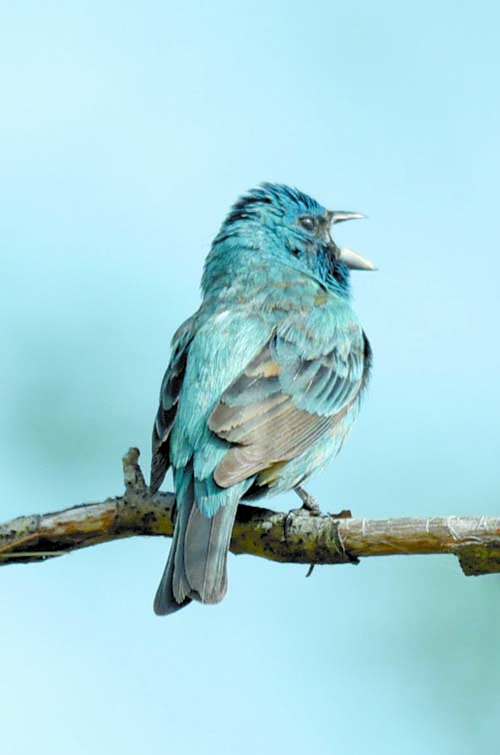Earth Notes: Summer song, temporarily interrupted

By Mary Jewett
Guest Columnist
In the past two years, where I live in Lovell, we have been visited by spongy moth caterpillars. Last year, they showed up after the leaves were already out, methodically munching their way through our trees. Oak, maples, beech, witch hazel, birch, no species was safe. At the end of the summer, we saw thousands of moths, expanding the range of their destruction beyond our little corner of Western Maine. This year, the caterpillars started up almost as soon as the trees had leaves. The birds had just enough time to find a mate and build a nest before the leaves were gone. We had a robin nesting directly next to a trail in our woods. In the spring, the nest was totally hidden, but within weeks it was completely exposed to our eyes, as well as the wind, rain, and heat. It wasn’t a great time.
During this period of defoliation, I heard very few birds singing. The lack of food and shelter chased them deeper into the woods, and away from my ears. One strange exception was a single indigo bunting, singing away day after day in the barren trees. What made it stranger is there has never been a bunting in those woods before. My theory is that he thought it was spring, the naked branches made him think he was getting a jump start on the season. It was both sad and comical.
About a month ago, I noticed that some of the trees had little leaf buds coming back. The caterpillars died out and the forest has been recovering. If you drive along Route 5 in North Lovell, you may notice that, after looking distinctly winter-esque for a couple of months, the deciduous forests are quite spring-like in appearance. It is an odd site for mid-August, but I am glad the trees will get their photosynthesizing in, and I wonder what the tree rings will look like for these years. The spongy moth cycle lasts between 2-5 years, and I’m very much hoping we stop at 2.
This weekend, while walking in the sparsely green forest, I noted the songs of several bird species. It felt a bit like spring, avidly scanning the young leaves for songbirds and wishing for the binoculars I keep in my car. It was fun trying to determine if that squeaky song belonged to a black-and-white or Blackburnian warbler (it was a black and white). Blue-headed vireos, a bird I usually associate with early spring, is sharing its’ melodious, questioning calls. Wood pewees, American redstarts, winter wrens, and others seem to be back, and celebrating the return of the forest.
As we know, one of the characteristics of invasive species is their lack of predators. For this reason, our native birds don’t want anything to do with the spongy moths. The only birds we had that would eat them were European starlings and, being an invasive species themselves, I didn’t celebrate their high numbers in our area. But with the return of our leaves comes a return of native bugs. It may be too late now for that robin to start over but, after a couple months of barren, desolate woods, it is a soothing balm to see the green return.

